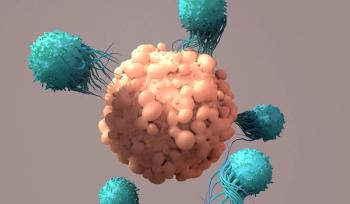
- BioPharm International, April 2024
- Volume 37
- Issue 4
- Pages: 34
Focusing on Effectiveness for CAPAs
Compliance can be greatly improved by concentrating on the basic elements of CAPA investigations, advises Kate Rice, global quality systems manager, Nelson Laboratories, and Susan J. Schniepp, distinguished fellow, Regulatory Compliance Associates.
Compliance can be greatly improved by concentrating on the basic elements of CAPA investigations, advises Kate Rice, global quality systems manager, Nelson Laboratories, and Susan J. Schniepp, distinguished fellow, Regulatory Compliance Associates.
Q: I work in quality assurance, and we consistently get inspection observations regarding the incompleteness of our corrective and preventive action (CAPA) activities. What advice can be offered to improve the quality of our CAPAs?
A: You and your company are not alone. Incomplete CAPA investigations continually ranks in the top five citations by FDA and constitute a critical component of quality management systems in the pharmaceutical industry. As many well know, CAPAs stand out as meticulously scrutinized records by regulatory bodies; therefore, it is imperative to take appropriate actions not only to rectify and prevent non-conformities, and potential issues in processes, products, or systems but also to prevent regulatory audit findings.
The effectiveness of a CAPA plan relies on its ability to address various types of actions tailored to the specific needs and challenges encountered. Understanding all types of actions is pivotal for ensuring compliance, enhancing product quality, and fostering continuous improvement within pharmaceutical operations. The following information delineates each type of action and when it should be applied.
Containment
Containment entails immediate and interim measures aimed at preventing further spread or recurrence of an issue before implementing a CAPA. It’s crucial to initiate containment measures promptly upon identifying high-risk issues, without waiting for the completion of the investigation. Containment actions reduce the issue’s impact while the investigation is ongoing.
Correction
Corrections involve immediate actions to rectify occurrences or symptoms that have already transpired. These actions target the immediate issues to mitigate imminent risks or adverse effects. Corrections are executed without delving into root cause investigations, aiming to quickly restore compliance with established standards and procedures.
Corrective action
Corrective actions address the root cause of problems once a comprehensive investigation has been completed. They are long-term solutions designed to mitigate issues and prevent recurrence. Upon implementation of corrective actions, containment measures may cease.
Preventive action
Preventive actions are proactive measures implemented to anticipate, mitigate, or eliminate potential risks before they occur. Unlike corrective actions, which address existing issues, preventive actions focus on identifying and addressing vulnerabilities in processes, systems, or products to prevent future occurrences of non-conformities or other issues.
Effectiveness check
Effectiveness checks monitor the implemented solutions to provide evidence that the initial problem was solved and there has been no recurrence of the identified issue. The amount of data that needs to be collected to prove the fix was effective will vary on the complexity of the problem being addressed.
In summary, correction addresses occurrences before issue identification, while containment halts issues during root cause determination until corrective action ensues. Containment actions cease upon corrective action implementation. Effectiveness checks provide data confirming the correction was successful. Considering all these action types for a CAPA record enhances preparedness for regulatory scrutiny. Implementing CAPA actions meticulously underscores a commitment to quality, compliance, and continuous improvement within pharmaceutical operations.
About the authors
Kate Rice is global quality systems manager, Nelson Laboratories, and Susan J. Schniepp, is distinguished fellow, Regulatory Compliance Associates.
Article details
BioPharm International®
Vol. 37, No. 4
April 2024
Page: 34
Citation
When referring to this article, please cite it as Rice, K. and Schniepp, S.J. Focusing on Effectiveness for CAPAs. BioPharm International 2024 37 (4).
Articles in this issue
over 1 year ago
Benefiting from Single-Use Tech Downstreamover 1 year ago
Driving Innovation in Nucleic Acid Therapeuticsover 1 year ago
A Closer Look at Affinity Ligandsover 1 year ago
Cleaning Process Design for Peptide Therapeuticsover 1 year ago
Taking Full Advantage of Service Providersover 1 year ago
May I Present the NeoantigenNewsletter
Stay at the forefront of biopharmaceutical innovation—subscribe to BioPharm International for expert insights on drug development, manufacturing, compliance, and more.





